Day 2 of a two day Early Autumn Private Tour in North Norfolk today. It was another lovely sunny day, a little bit hazier than yesterday with a slightly cooler light ENE breeze which kept the temperatures very comfortable in the low 20sC on the coast. Perfect weather to be out birding again.
We started the day at Titchwell. There was no sign first thing of the Glossy Ibis which had been here yesterday afternoon, but we decided to go anyway and get in before the car park filled up. When we arrived and got out of the minibus, a Goldcrest was feeding in a pine right above where we had parked.
There were next to no cars in the overflow car park yet, so we decided to have a quick walk round before it got busy. A flock of Long-tailed Tits came out of the trees by the entrance track and flew across in front of us. They had a couple of Chiffchaffs in tow too. We then watched them feeding in the brambles and elders in the back of the car park. along with a couple of Blackcaps.
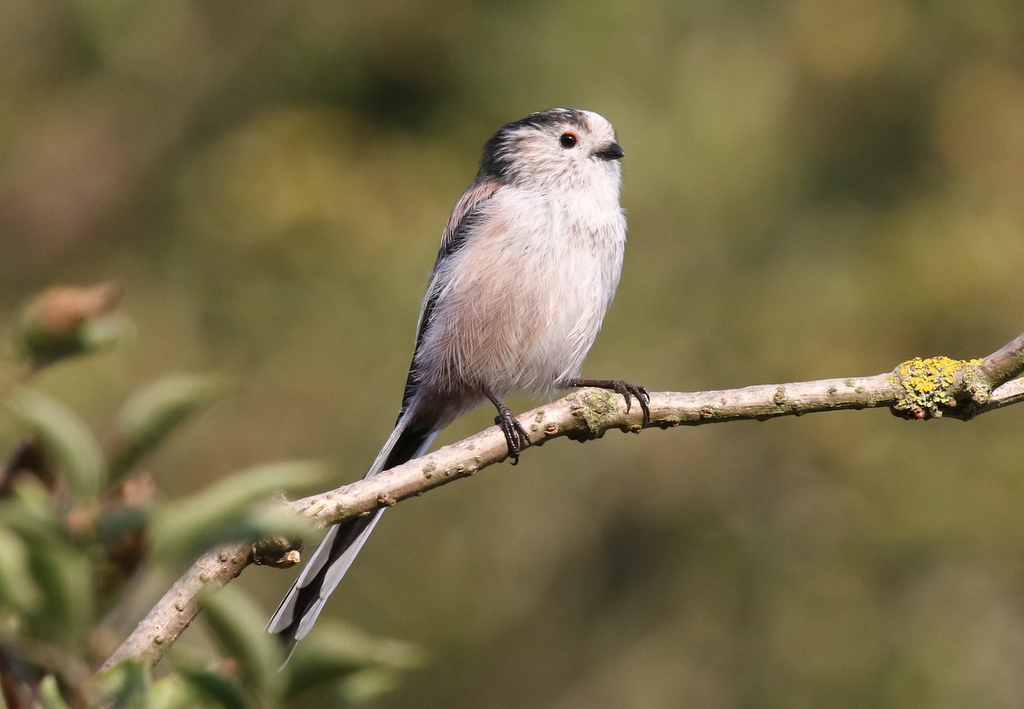
We followed the flock round to the far side. There were a few finches in the car park too, but the Bullfinches feeding in the sallows in the far corner remained well hidden and hard to see. We were surprised to find a Moorhen clambering around high up in the bushes here too – an odd place for one. A couple of Jays flew up into the top of the tall willows behind. A Red Admiral butterfly feeding on the ivy looked very smart in the morning sunshine.
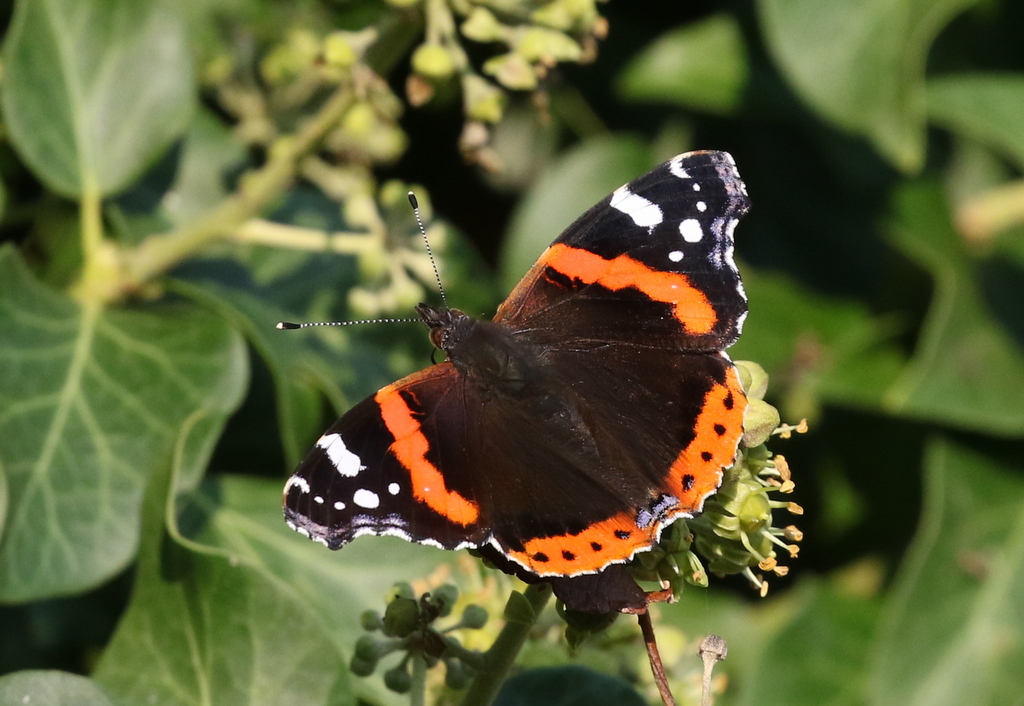
We made our way round to the Visitor Centre, through the crowds of beachgoers and dog walkers who were rapidly filling up the car park, which is still partly closed. There had apparently been a Pied Flycatcher earlier by the Visitor Centre, so we had a quick look in the trees back to the picnic area, but there was no sign of it there.
Back past the visitor centre, a small flock of Siskins flew through the trees. We had a quick look in the alders by the main path, but they weren’t there. While we were looking, a small skein of around twenty Pink-footed Geese came overhead calling, possibly fresh arrivals from Iceland, coming here for the winter.
With it being so sunny, we decided to head round to Patsy’s Reedbed first and then have a look at the Freshmarsh from the end of Autumn Trail. As we walked up to the screen at Patsy’s, the first thing that caught our eye was a Great White Egret out in the middle, preening. It was striking how big it was, particularly when it stood with its neck stretched up, and we could see its long, dagger-like yellow bill.
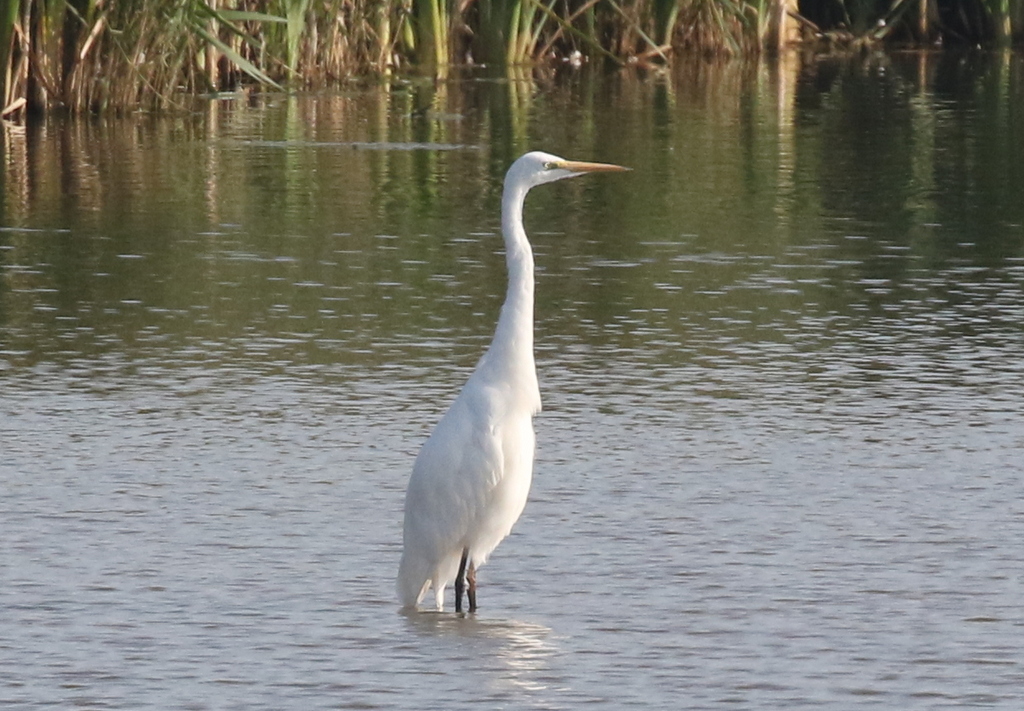
Another Great White Egret flew across over the reedbed further back. The one we were watching can’t have seen it – perhaps it heard something, because after the second bird landed in the reeds, the first took off and flew back towards it. It chased it up out of the reeds and we lost sight of the two of them behind the bushes.
Otherwise, there were a few ducks on the pool this morning, mainly Gadwall. Coot was an addition to the trip list here, and there were a couple of Little Grebes too. A young Marsh Harrier, dark chocolate brown with a paler head, quartered over the reed behind.
As we made our way round along East Trail and on to Autumn Trail, there were several Common Darters basking on the path which took off ahead of us. A very smart fresh Shaggy Inkcap toadstool was sticking up out of the short grass on the verge. There were a few squashed Bloody-nosed Beetles and a couple of live ones. We picked one up, which had lost a couple of legs, to move it off the path and it duly obliged by exuding the red liquid from its mouthparts from which it gets its name. A couple of Cetti’s Warblers shouted at us as we passed.

We had spoken to someone earlier who had suggested that most of the waders were at the back of the Freshmarsh, but apart from quite a few Ruff in the top corner, there wasn’t much up this end now. Out in the middle, we could see a good number of Black-tailed Godwits and just a couple of lingering Avocets today. A smaller wader further back still looked like the Little Stint, but it was a long way away from this side. In the distance, the other side of the West Bank path, five Spoonbills flew up and circled round.
A couple of Bearded Tits were feeding on the mud at the base of the reeds, in front of the watchpoint at the end of the path. We had a nice view of them through the scopes, a cracking male with powder grey head and black moustache, and a browner female. Another small group of 5-6 were calling to each other in the reeds and we saw them fly up a couple of times before crashing back in.
As we turned to head back, we heard the group of Bearded Tits calling again and watched them land again in the reeds close to the path. We walked up towards where they had landed and noticed one Bearded Tit on its own in the reeds. The rest of the flock further ahead flew up and over the bank towards Brancaster Marsh, but the lone bird stayed put. It climbed up the reeds right in front of us, giving us a great view, calling for the rest of the group.
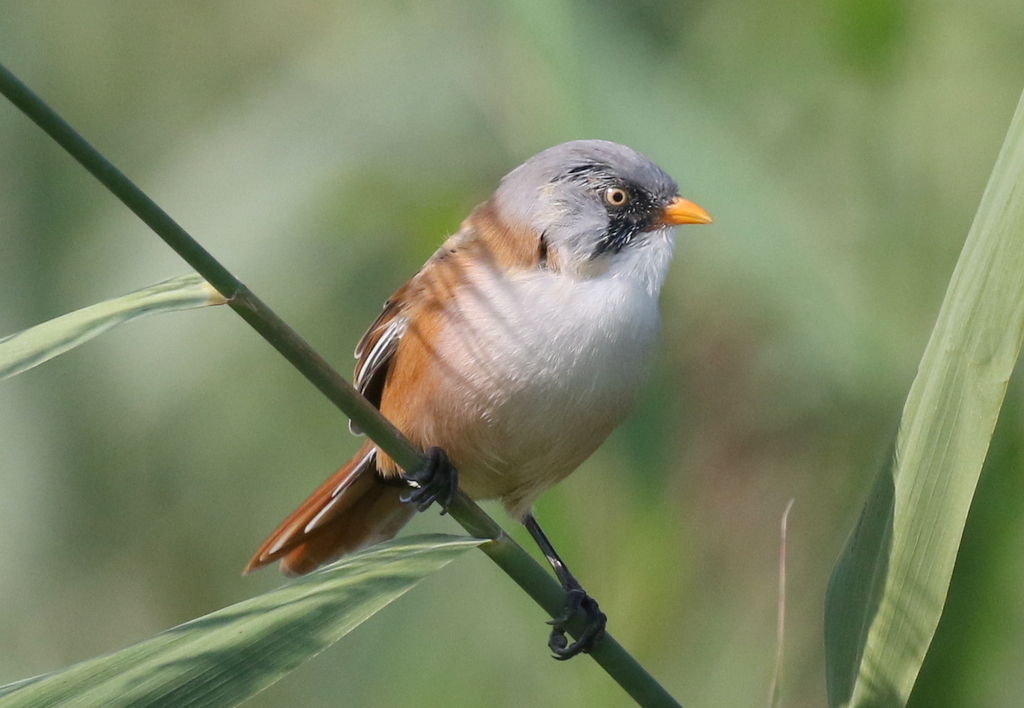
It was a male, with powder blue-grey head and black moustache, probably a young one as it was moulting and the head was not as well marked as some. The Bearded Tit flew up a couple of times but landed again. Eventually it seemed to work up the courage to cross the path, but simply landed again in a dead umbellifer on the bank right next to one of us! After flitting around there for a couple of seconds, it finally flew up and over the bank.
We made our way back and round via Meadow Trail. We stopped at the platform by the dragonfly pool to admire an apple green and bright blue Southern Hawker, which in typical style kept coming back to hover close to us. It was chased at a couple of times by a Migrant Hawker, and then it decided to chase it away over the tops of the sallows. A tandem pair of Willow Emerald damselflies were trying to perch in the reeds below the platform but struggled to find somewhere they could agree to settle.
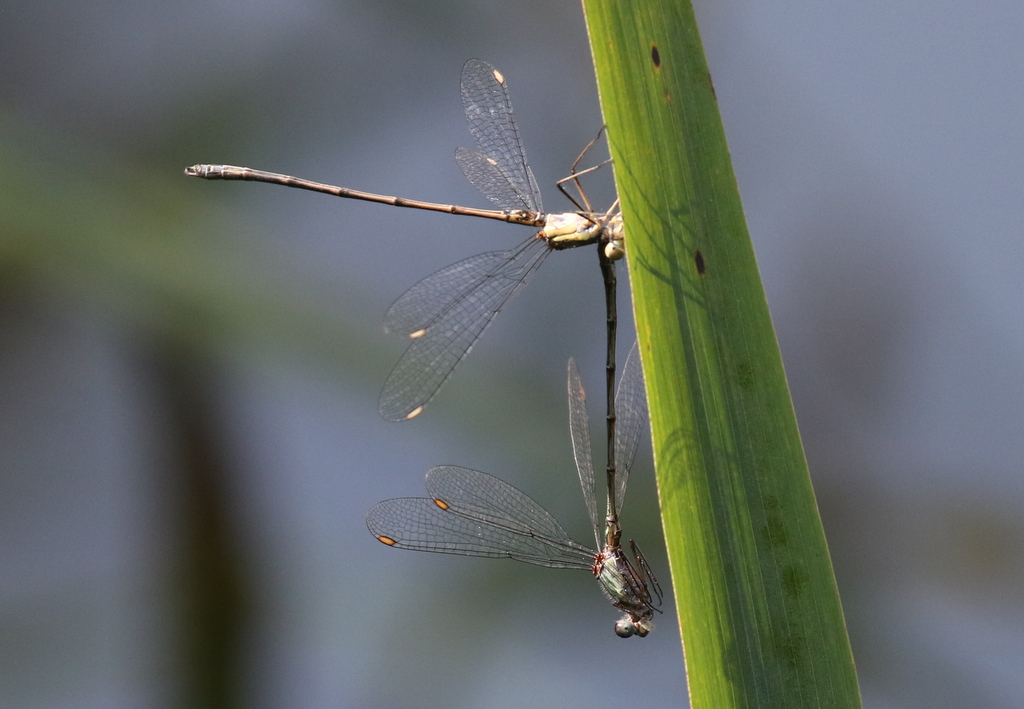
Walking out on the west bank path, we could hear more Bearded Tits calling from the reeds. Thankfully, having had such amazing views of the male earlier, we didn’t need to linger to try to see them here. We stopped by the Reedbed Pool and a scan revealed a good number of Common Pochard up towards the back. A Kingfisher called from one of the channels in the reedbed, but didn’t come out.
Looking out across the saltmarsh the other side, we could see a line of white shapes asleep in the grass. Most were clearly Little Egrets, but the end one looked a little larger, a different shape, and more of a dirty yellowish colour. It was a Spoonbill, presumably one of the ones we had seen distantly over here earlier.
A paraglider was flying over Thornham Harbour and flushing everything. Several flocks of Curlew flew up and circled round nervously. A flock of Golden Plover came in over the path, most of them having lost their summer black bellies already. The Spoonbill woke up and flashed its bill, confirming our ID. A second Spoonbill flew in over the saltmarsh towards us, its black wingtips displaying its immaturity, before it turned and flew back the other way.
With the sun out, and nothing much on the drier mud in front of Island Hide, we decided to scan the Freshmarsh from the west bank path further along. As we walked up, we could hear a Spotted Redshank calling, but presumably it was flying off as we couldn’t see it out on the mud. One of the Great White Egrets was now standing on the edge of the small round island, preening.
There were lots of Black-tailed Godwits still out in the middle, and a selection of Ruff around the edges. Looking carefully through the godwits, we found a single Bar-tailed Godwit too – its smaller size, slightly shorter legs and more contrastingly-marked upperparts setting it apart, even before we could see its slightly upturned bill.
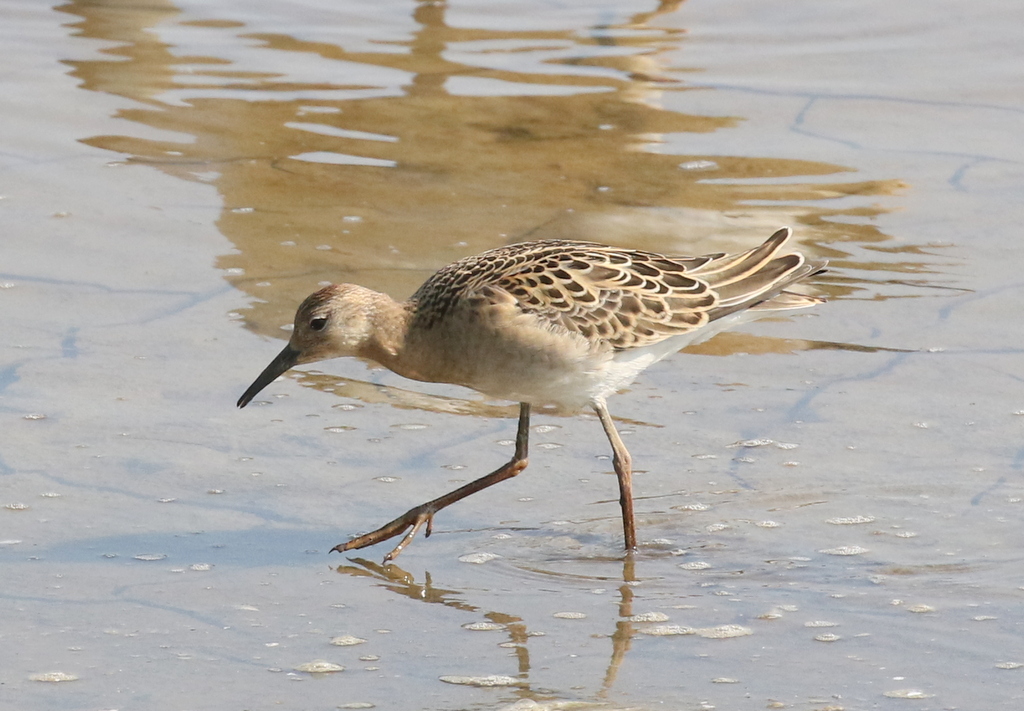
There were one or two Dunlin scattered around the islands and edges and a larger group of seven at the far end, below the reeds. We couldn’t find the Little Stint at first, it wasn’t where we had seen it earlier, but scanning carefully we eventually found it on the muddy edge of the island over in front of the fence. It was feeding with its rear end up in the air a lot, which confirmed it was the bird we had seen distantly from the end of Autumn Trail earlier. Odd behaviour, but instantly recognisable as different. A single Common Snipe was feeding just inside the fence.
We wanted to spare our energy for the afternoon, so we decided not to walk on any further and headed back to the car park. There had been a Wryneck earlier seen at Holme, so we decided to have a go to see if we could find it. As we arrived at the pay hut, we were told it had been seen again about 15 minutes before, in the bushes just beyond.
We parked and got out, and the challenge quickly became clear – there was a constant stream of cars up and down the track and people up and down the coastal path the other side of the bushes. Amazing numbers of people for this time of year, albeit it was a beautiful day. We had a slow walk round the bushes, with no success, so stopped to have lunch back at the minibus, before having another go.
We figured it might be worth having a walk through the dunes – no one seemed sure whether there might have been a second Wryneck seen further up towards the Firs, and there are often migrants in here. But as we walked through the bushes, there were very few birds. We did see lots of Small Heath and several Small Copper butterflies.
It was only as we got much closer to the Firs that we started to see things. Several flocks of Curlew came in off the beach, presumably disturbed from where they were feeding, along with a smaller number of Black-tailed Godwits.
Then we came across a Stonechat in the bushes, a female, followed quickly by another two, one a male with a black throat. A rattling call alerted us to a couple of Lapland Buntings passing overhead, but they were high in the bright sky and hard to see as they disappeared off west.
One of the group had lingered further back to take some photographs, and when they walked up to us they thought they had just seen a Whinchat. They weren’t wrong – it had just appeared in the bushes behind us, presumably following the Stonechats. We had a nice view of it, before it flew back further into the dunes – a nice bonus here.

Everyone was feeling tired now, so the intrepid guide walked back to get the minibus and the others waited at the Firs. We had a quick look at the bushes by the payhut as we drove out, but there had been no further sign of the Wryneck. We decided to head back east to Burnham Overy.
We almost couldn’t get into the car park at Burnham Overy Staithe, but thankfully someone was leaving just as we arrived. We set out along the seawall. There was lots of disturbance in the harbour channel – boats, a paddleboard, swimmers – and we didn’t see many birds until we got to the arm of mud which extends alongside the bend in the seawall.
Scanning the mud, we could see lots of Common Redshanks. Several Turnstones were feeding in alongside the gulls, mostly Black-headed Gulls but with a couple of Common Gulls too. There were a few Dunlin too, and a couple of Grey Plover.
A small group of white shapes were down in the grass on the edge of the saltmarsh further up and through the scope we could confirm they were the Cattle Egrets we had come to look for, nine of them. We walked further up until we were directly opposite and had a nice view as they stood in the vegetation preening.

The tide was coming in fast now and starting to fill the arm of mud in front of us. The Redshanks were feeding more actively and the Cattle Egrets started to move. First one or two, then the rest of the flock flew down to the water. They seemed to be feeding on the tide out in the shallow water beyond the open mud, in amongst the Redshanks – unusual behaviour for Cattle Egrets but fascinating to watch. Presumably they had even been waiting out on the saltmarsh for the incoming tide.
Looking inland, the other side, a Red Kite was hanging in the air over the fields in the distance, getting harrassed by crows. A Grey Heron flew across and landed with the cattle out in the middle. A Mediterranean Gull flew in from the harbour and over the seawall, overhead, flashing its pure white wing tips.
It was a great view, looking out across the harbour in the late afternoon sunshine, or inland to the coast road and beyond. A great way to end our two days, watching the Cattle Egrets out in the harbour. It was time to head back.
















